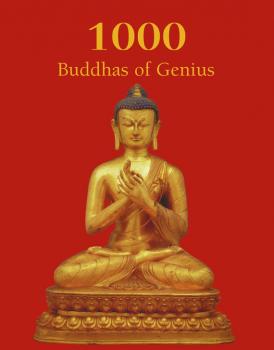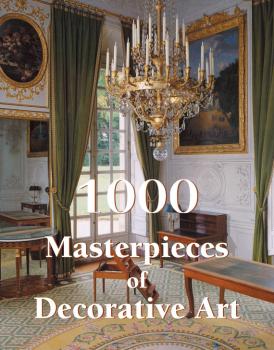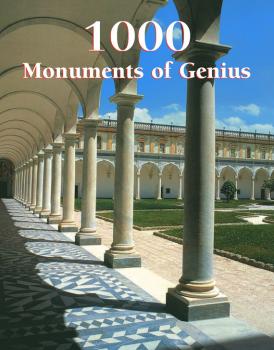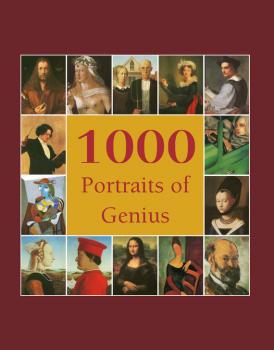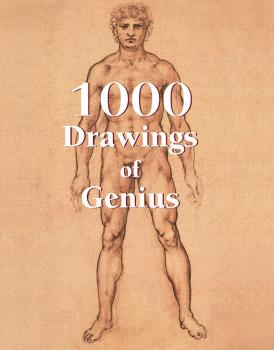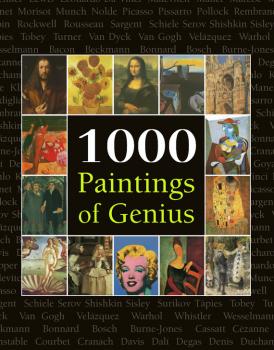Parkstone International Publishing
Все книги издательства Parkstone International Publishing1000 Buddhas of Genius
“All living beings are Buddhas and have wisdom and virtue within them.” (Buddha) Buddha ranks among the most depicted holy figures of the world – perhaps appearing more than Christ, a subject widely treated by Western artists. Venerated in all the nations of Asia, and even beyond, his image took form along the Silk Road, the birthplace of many schools of Buddhism. Indeed, the Buddhist religion recognises many Buddhas representing various traditions such as Buddhism of 'the Ancient Teaching' (Theravada), of 'the Great Vehicle' (Mahayana) and Tantric Buddhism (Varjrayana). A figure adored by all, Buddha has been depicted in every art form: sculpture, often of monumental size, like the now destroyed Buddhas of Bamyan, painting, and above all in countless cave murals, such as those of Ajanta in India or Dunhuang in China. Perfect for all those passionate about Asian art, from neophytes to Buddhists, this fascinating work invites the reader not only to discover or rediscover Buddha, his history, his codes, but also his innumerable faces through 1,000 representations selected from among the most beautiful works held in the world’s greatest museums.
1000 Masterpieces of Decorative Art
From ancient Sumerian pottery to Tiffany stained glass, Decorative Art had been a fundamental part of the human experience for generations. While Fine Art is confined to galleries and museums, Decorative Art is the art of the every day, combining beauty with functionality in objects ranging from the prosaic to the fantastical. In this work, authors Albert Jacquemart and Émile Bayard celebrate the beauty and artistic potential behind even the most quotidian object. Readers will walk away from this text with a newfound appreciation for the subtle artistry of the manufactured world.
1000 Monuments of Genius
Since the mythical Tower of Babel, humans have continuously tried to erect monuments to match their oversized egos. With ancient ziggurats, the Taj Mahal, or the Empire State Building, man has for centuries demonstrated his force by raising structures for purposes both religious and profane. As international cultural statements without words, symbols of a people’s values – devotion, patriotism, power – symbols of a civilisation’s grandeur, these monuments still fascinate and attract an ever-growing public who is captivated by the creativity and ingenuity of these architects and stonemasons. Their historical message goes far beyond mere art history, for they tell us of the lives and evolution of the peoples of the past, as does the Parthenon in Athens, many times destroyed, rebuilt, reused, attacked, pillaged and restored once again today. This work, featuring 1,000 monuments chosen from around the globe, retraces human history, the techniques, styles and philosophies necessary for the construction of so many splendours over the centuries, providing a panorama of the most celebrated monuments while evoking the passion of their makers. The reader can explore the changing values of humanity through the edifices it has built and understand these structures as triumphs of humankind.
1000 Portraits of Genius
According to the predominant standards, a portrait should be a faithful representation of its model. However, this is not always the case. This gallery of 1,000 portraits illustrates how the genre has been transformed throughout history, and has proven itself to be much more complex than a simple imitation of reality. Beyond exhibiting the artist’s skill, the portrait must surpass the task of imitation, as just and precise as it may be, to translate both the intention of the artist as well as that of its patron, without betraying either’s wishes. Therefore, these silent witnesses, carefully selected in these pages, reveal more than faces of historic figures or anonymous subjects: they reveal a psychology more than an identity, illustrate an allegory, serve as political and religious propaganda, and embody the customs of their epochs. With its impressive number of masterpieces, biographies, and commentaries on works, this book presents and analyses different portraits, giving a reflection of the evolution of society, and above all the upheavals of a genre that has dramatically shaped the history of art.
1000 Drawings of Genius
Long thought of as the neglected stepchild of painting, the art of Drawing has recently begun to enjoy a place in the sun. With major museums around the world, from the Met to the Uffizi, mounting exhibitions focussed on the art of draughtsmanship, Drawing is receiving more critical and academic attention than ever before. This captivating text gives readers a sweeping analysis of the history of Drawing, from Renaissance greats like Leonardo da Vinci and Michelangelo, to Modernist masters like M.C. Escher, Pablo Picasso, and everyone in between.
Aestheticism in Art
William Hogarth wrote his Analysis of Beauty in 1753, during the Age of Enlightenment. Through this captivating text, he tends to define the notion of beauty in painting and states that it is linked, per se, to the use of the serpentine lines in pictorial compositions. He calls it the line of beauty . His essay is thus dedicated to the study of the composition of paintings, depending on the correct use of the pictorial lines, light, colour, and the figure's attitudes. These timeless concepts have been applied by several artists through the centuries. Paintings from every period have here been chosen to support this demonstration. They allow us to explore the various manners in which beauty can be expressed in painting.
The Splendor of English Gothic Architecture
This book explains and celebrates the richness of English churches and cathedrals, which have a major place in medieval architecture. The English Gothic style developed somewhat later than in France, but rapidly developed its own architectural and ornamental codes. The author, John Shannon Hendrix, classifies English Gothic architecture in four principal stages: the early English Gothic, the decorated, the curvilinear, and the perpendicular Gothic. Several photographs of these architectural testimonies allow us to understand the whole originality of Britain during the Gothic era: in Canterbury, Wells, Lincoln, York, and Salisbury. The English Gothic architecture is a poetic one, speaking both to the senses and spirit.
The Lost Treasures Persian Art
Housed in the Hermitage Museum along with other institutes, libraries, and museums in Russia and the republics of the former Soviet Union are some of the most magnificent treasures of Persian Art. For the most part, many of these works have been lost, but have been catalogued and published here for the first time with an unsurpassed selection of colour plates. In a comprehensive introduction, Vladimir Lukonin, Director of the Oriental Art section of the Hermitage Museum, and his colleague Anatoli Ivanov have broadly documented the major developments of Persian Art: from the first signs of civilisation on the plains of Iran around the 10th century BCE through the early 20th century. In the second part of the book they have catalogued Persian Art giving locations, origins, descriptions, and artist biographies where available. Persian Art demonstrates a common theme which runs through the art of the region over the past three millennia. Despite many religious and political upheavals, Persian Art whether in its architecture, sculpture, frescoes, miniatures, porcelain, fabrics, or rugs; whether in the work of the humble craftsmen or the high art of court painters displays the delicate touch and subtle refinement which has had a profound influence on art throughout the world.
1000 Paintings of Genius
Featuring 1,000 internationally recognised paintings, this collection spans the history of art from the 13th century to the present, from the early stirrings of the Renaissance movement in Italy to the boundary-pushing experiments of the Abstract Expressionists in post-World War II America. These cultural treasures are presented in historical context, along with extended captions and biographies of one hundred of the most influential artists. Each chapter reviews major events that had an impact on the art world, defines significant techniques, and comments on relevant innovations. An artistic, cultural, and educational resource, this book invites us to consider the interaction between history and art, and the influence artists through the ages have had on each other, as well as the future of the discipline. The traditional and the controversial, the mythic and the understated, the quietly subversive and the deliberately challenging – all are thought-provoking if only for their persistence, and together they document the progress of Western history through the eyes of our most creative visionaries.
1000 Scupltures of Genius
From antiquity to the 20th century, this sculpture collection offers a truly original vision of Western art. Here are the most sensual and harmonious masterworks to the most provocative and minimalist sculptures. Sculpture shapes the world and our concept of beauty, leaving everlasting silhouettes and always creating new intriguing ones. These masterworks are the mirror of an era, of an artist and his public and through this sculpture gallery, one visits not only the history of art, but history as a whole. Between the acclaimed ideals of beauty and the most controversial works, 1,000 Sculptures of Genius will give you a true panoramic view of Western sculpture. Along with numerous references, comments on masterworks and biographies, this work enables the reader to rediscover Western world heritage and is the perfect guide for art students and statuary lovers.
